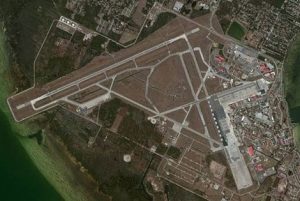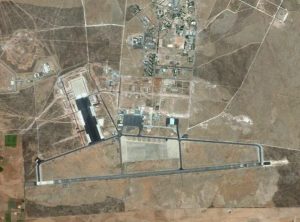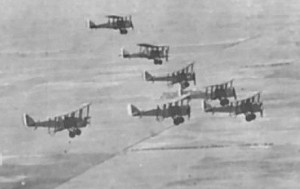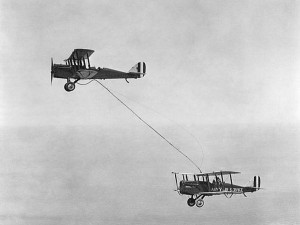refueling
 Governments don’t like to lose things…especially nuclear weapons. In fact, several movies have made that have depicted just how it might be done, and what the consequences might be if the thieves were successful. Of course, nothing could be more strange than to have it actually happen. In reality, it did happen…on March 10, 1956. It was on of the strangest mysteries in the United States. The B47 Stratojet took off from MacDill Air Force Base in Florida, on a non-stop flight bound for Ben Guerir Air Base, Morocco. The plane had completed the first aerial refueling without incident.
Governments don’t like to lose things…especially nuclear weapons. In fact, several movies have made that have depicted just how it might be done, and what the consequences might be if the thieves were successful. Of course, nothing could be more strange than to have it actually happen. In reality, it did happen…on March 10, 1956. It was on of the strangest mysteries in the United States. The B47 Stratojet took off from MacDill Air Force Base in Florida, on a non-stop flight bound for Ben Guerir Air Base, Morocco. The plane had completed the first aerial refueling without incident.
As the plane was beginning it’s second refueling attempt, it was  descending into a cloud. In one of the strangest mysteries in United States government history, contact was lost with the plane in the cloud. No debris, crew, or missiles were ever located. After descending through solid cloud to begin the second refueling, at 14,000 feet, B-47E serial number 52-534, failed to make contact with its tanker. The unarmed aircraft was carrying two capsules of nuclear weapons material in carrying cases. Losing a bomber carrying nuclear weapons, could be catastrophic, but the nukes were never a threat to start a nuclear war. There are plenty of safety precautions to avoid such issues when a plane is going down. Also notable is the fact that in 1956, there were no hackers who could take over a weapon from the inside. The United States government has lost a total of 11 nukes, and two of them still remain the biggest mystery are from this flight.
descending into a cloud. In one of the strangest mysteries in United States government history, contact was lost with the plane in the cloud. No debris, crew, or missiles were ever located. After descending through solid cloud to begin the second refueling, at 14,000 feet, B-47E serial number 52-534, failed to make contact with its tanker. The unarmed aircraft was carrying two capsules of nuclear weapons material in carrying cases. Losing a bomber carrying nuclear weapons, could be catastrophic, but the nukes were never a threat to start a nuclear war. There are plenty of safety precautions to avoid such issues when a plane is going down. Also notable is the fact that in 1956, there were no hackers who could take over a weapon from the inside. The United States government has lost a total of 11 nukes, and two of them still remain the biggest mystery are from this flight.

Despite an extensive search, no debris were ever found, and the crash site has never been located. The crew, who has been declared dead are Captain Robert H. Hodgin, 31, the aircraft commander; Captain Gordon M. Insley, 32, observer; 2nd It. Ronald L. Kurtz, 22, pilot. The plane’s last known position was over or near the Mediterranean Sea, southeast of Port Say, an Algerian coastal village near the Moroccan frontier. A French news agency reported that the plane may have exploded in flight near Sebatna in eastern French Morocco, but that seems unlikely, since no debris was ever found. It certainly makes you wonder what happened.

 The terrorist attacks that took place at the World Trade Center in New York, the Pentagon in Washington DC, and just outside Shanksville, Pennsylvania on September 11, 2001 brought about changes in our country that we never thought we would see. For the first time in modern aviation history, all air traffic, except for military security planes were grounded. The skies were eerily void of contrails from planes, and the air lacked the sounds from them that we had become so used to that we almost didn’t notice the sounds anymore…unless, like me, you just like planes, and like to watch them.
The terrorist attacks that took place at the World Trade Center in New York, the Pentagon in Washington DC, and just outside Shanksville, Pennsylvania on September 11, 2001 brought about changes in our country that we never thought we would see. For the first time in modern aviation history, all air traffic, except for military security planes were grounded. The skies were eerily void of contrails from planes, and the air lacked the sounds from them that we had become so used to that we almost didn’t notice the sounds anymore…unless, like me, you just like planes, and like to watch them.
Of course, eventually we would begin to see planes again, because we are a nation on the move and planes are essential. The planes began flying again, but with them came a lot more military planes. In most ways that was good, but with that came something else that I never expected to see…mid-air refueling. I have only seen this in action one time. I was on my way into my sister’s house and I looked up because I heard a plane. It was actually two planes…very close together. With 9-11 so fresh in my mind, my first thought was that I might be witnessing an attack above my head. I stood there and watched closely. The planes weren’t so high that you couldn’t see the refueling line as it connected one plane to the other. I was fascinated…and relieved…to witness that. I don’t know how many people have seen it, but my guess is that it isn’t many…at least outside of the aviation industry or the military. Of course, the planes were moving and I didn’t see the line being retracted, but I still felt rather privileged to see that technology in action.
Mid-air refueling is not something that is so new, in fact the first time a plane was refueled in mid-air was on this day, August 23,1923. The Airco DH.4 was a British two-seat biplane day bomber of World War I. It was designed by Geoffrey de Havilland for Airco, and was the first British two-seat light day-bomber to have an effective defensive armament. It first flew in August 1916 and entered service with the Royal Flying Corps in March 1917. The majority of DH.4s were actually built as general purpose two-seaters in the United States, for service with the American forces in France. The plane could do just about anything needed…except fly for an extended time period. Hence the name day-bomber. Then, all that changed when Captain Lowell Smith and Lieutenant John Richter received the first mid-air refueling on June 27, 1923, from a plane flown by 1st Lieutenant Virgil Hine and 1st Lieutenant Frank Seifert.
When we think of mid-air refueling, we picture something high tech, like what I saw, but the technology for it 
 began in the 1920s. To me that seems incredible, but I guess that most inventions take time to develop. Time and hard work, but once they are developed, they can change the course of history. These days, planes are refueled like the two planes I saw and even a plane that refuels a helicopter, which I find completely amazing. The human mind has come up with so many inventions, and I think this one is among the greatest.
began in the 1920s. To me that seems incredible, but I guess that most inventions take time to develop. Time and hard work, but once they are developed, they can change the course of history. These days, planes are refueled like the two planes I saw and even a plane that refuels a helicopter, which I find completely amazing. The human mind has come up with so many inventions, and I think this one is among the greatest.

